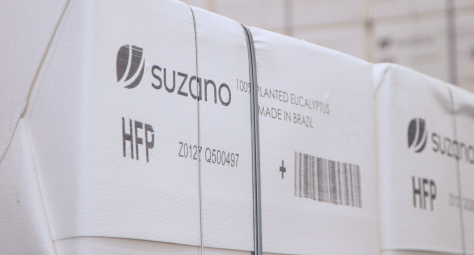sobre o que você deseja falar?


perguntas, sugestões ou problemas técnicos envolvendo a plataforma

informações sobre a empresa


We support the local economy and encourage entrepreneurship among micro and small businesses. In the states of Bahia, Espírito Santo, Maranhão, Mato Grosso do Sul, and São Paulo—where Suzano's operations, including our head office and subsidiaries, are located—we transacted BRL 14.9 billion with local suppliers. This represents 36.7% of our total global purchases during the specified period.
We are committed to supporting the growth of our essential partners through the Semear program, which has trained over 400 companies since its launch in 2020. Additionally, we are among the companies supporting Prodfor in Espírito Santo.
An essential aspect of creating value in the supply chain is providing financial support to our suppliers. In 2024, for the fourth consecutive year, we have continued our partnership with the fintech company Monkey Exchange to help suppliers access credit. To learn more about our processes and policies for managing responsible suppliers, please visit the Suzano Supplier Portal.
The company is dedicated to sustainable practices in its supply chain and encourages wood suppliers to obtain FSC® and/or PEFC Forest Management certification. To ensure that wood sourced from partners who do not participate in these certification programs is still responsibly sourced, we implement a Due Diligence System and Monitoring Program based on Suzano's Wood Supply Policy. This program aligns with international regulations and the standards set by FSC® and PEFC for controlled wood and controlled sources.
Due diligence involves assessing and mitigating risks within the supply chain. This includes verifying compliance with environmental, social, legal, and labor standards through first—and second-party audits and third-party audits conducted by independent organizations. The practice encompasses both direct and indirect wood suppliers involved in harvesting and transporting wood.
The following table shows the proportion of spending on local suppliers by state in Brazil.
| 2020² | 2021 | 2022 | 2023 | 2024 | ||||||
|---|---|---|---|---|---|---|---|---|---|---|
| Wood suppliers | Suppliers other than wood | Wood suppliers³ | Suppliers other than wood | Wood suppliers³ | Suppliers other than wood | Wood suppliers³ | Suppliers other than wood | Wood suppliers³ | Suppliers other than wood | |
| % | % | % | % | % | % | % | % | % | ||
|
Bahia |
n/d |
46,00% |
28,00% |
50,00% |
6,50% |
46,00% |
97,00% |
42,00% |
93,00% |
41,00% |
|
Espírito Santo |
n/d |
58,00% |
26,00% |
66,00% |
16,40% |
65,00% |
36,00% |
65,00% |
34,00% |
63,00% |
|
Maranhão |
n/d |
56,00% |
13,00% |
65,00% |
6,50% |
71,00% |
100,00% |
69,00% |
100,00% |
69,00% |
|
Mato Grosso do Sul |
n/d |
55,00% |
58,00% |
51,00% |
25,00% |
47,00% |
88,00% |
51,00% |
90,00% |
51,00% |
|
São Paulo |
n/d |
86,00% |
10,00% |
87,00% |
5,50% |
86,00% |
100,00% |
87,00% |
97,00% |
85,00% |
|
Suzano Average |
n/d |
n/d |
35,00% |
67,00% |
15,90% |
36,00% |
62,00% |
36,00% |
78,00% |
38,00% |